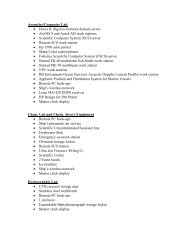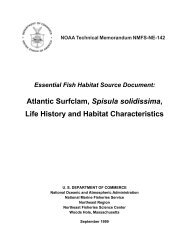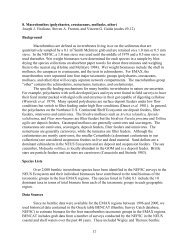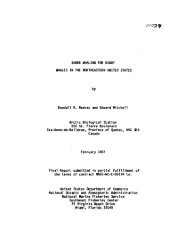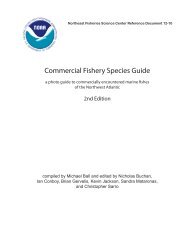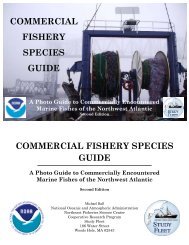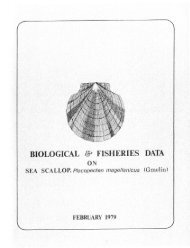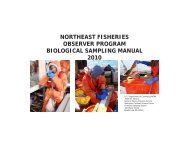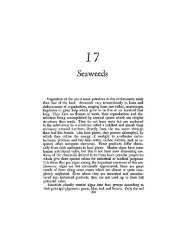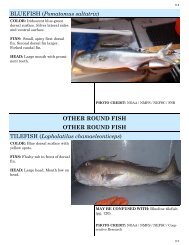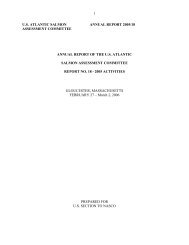Scup, Stenotomus chrysops, Life History and Habitat Characteristics
Scup, Stenotomus chrysops, Life History and Habitat Characteristics
Scup, Stenotomus chrysops, Life History and Habitat Characteristics
You also want an ePaper? Increase the reach of your titles
YUMPU automatically turns print PDFs into web optimized ePapers that Google loves.
Percent<br />
100<br />
90<br />
20<br />
10<br />
0<br />
100<br />
90<br />
30<br />
20<br />
10<br />
0<br />
Larvae vs. Temperature<br />
Stations<br />
Catch<br />
4 6 8 10 12 14 16 18 20 22 24 26 28<br />
Mean Water-Column Temperature (0-200m, C)<br />
10<br />
30<br />
50<br />
70<br />
90<br />
<strong>Scup</strong> Larvae, July & August<br />
Larvae vs. Depth<br />
110<br />
130<br />
150<br />
170<br />
190<br />
210<br />
230<br />
250<br />
270<br />
290<br />
325<br />
Depth Interval (m), Midpoint<br />
375<br />
450<br />
750<br />
1250<br />
1750<br />
>2000<br />
Page 19<br />
Figure 4. Abundance of scup larvae relative to water column temperature (to a maximum of 200 m) <strong>and</strong> bottom depth<br />
from NEFSC MARMAP ichthyoplankton surveys (July <strong>and</strong> August 1977-1987, all years combined). Open bars<br />
represent the proportion of all stations surveyed, while solid bars represent the proportion of the sum of all st<strong>and</strong>ardized<br />
catches (number/10 m 2 ).



